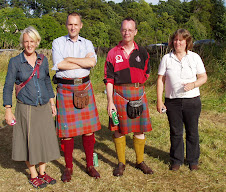Gretchen, thank you for that long-tail cast-on tip (comment, Tuesday). I shall never again for the rest of my life cast on for anything larger than a hat, without using it.
The “Mysterious Christmas Project” was just Thomas-the-Elder’s scarf. He occasionally stops by here.
Shandy, the ASJ has two small buttons at the top. I just sort of thot that it’s rare (and hard on the figure) to wear a cardigan buttoned all the way down, and of course a lot easier not to have to place all those buttonholes and sew on all those buttons.
The Grandson Sweater
Here it is again. I'm doing the plain bit at the bottom, and hope to reach the seeding today.

I find that Pagoldh herself, in the section of general instructions for all sweaters, has detailed instructions for cutting-open. There’s a bit in Vibeke Lind, too. I shall proceed unconcerned (and not put in a steek). If there’s yarn to spare, I’ll turn around and knit five or six st st rows at the top of the sleeve inside out, like turning a kilt ho after you’ve knit the turn-over, to form a facing for the cut edge on the inside.
I realised yesterday – writing is remarkably conducive to thinking, sometimes – that the pattern as written requires one to knit the shoulder patterning back and forth. So I will knit the seeding straight up in a tube, as required, and then, at the moment when I am supposed to leave some stitches on a holder for the neck and start going back and forth, I’ll abandon the whole thing and knit the sleeves.
And if (again) there’s yarn to spare, I will then be able (I think) to knit the shoulders in the round, with fill-in stitches in the middle, I suppose they would qualify as a steek, to be cut away afterwards.
Lisa, I think my technique for cutting v-necks in the old days was to put in a line or two of machine-stitching and then cut outside the line. Stitches for the ribbing would be picked up just inside the line. That leaves a little fringe, including the machine stitching, on the inside of the sweater, which for neatness and security ought to be held down with herring-bone stitch or the like.
Janet, if I pull this off I hope you will be emboldened to try steeking. I suspect it works best with sort of fuzzy yarn, like Shetland and like this Finullgarn stuff. But the big thing is that knitting, although keen to ravel downwards, isn’t terribly interested in going sideways. (Your photograph gives the lie to my remarks above about cardigan-buttoning -- but you've got the figure for it.)
Non-knit
I got some ironing done yesterday, and dealt with two pieces of paper and an e-bill. The idea is to keep at it. The weather is on my side – in a different January, we might be heading for Strathardle now. It would be folly to attempt it this year. My husband points out that even when Scotland has thawed, snow is likely to remain piled up on our driveway where it runs across the bottom of the Ns’ field.




Jean, I have steeked once or twice, and found great success using the crochet method of securing the steek before cutting. If memory serves, Meg Swansen covers it in her "Knitting" book. I was using Jamieson Shetland yarn.
ReplyDeleteBasically, you just slip stitch with your crochet hook and the same yarn as the garment,up one side and down the other, then cut in between.
The glass of wine and lie down in a dark room (per EZ) is optional. I will admit to knitting a swatch and experimenting on that before hoeing into my "proper" knitting.
Here's some pics:
http://tinyurl.com/steek
Gretchen has the right idea on the long tail cast on. I use the two ends of the yarn ball when I do it instead of a spare. Lately I've been using the knitted cast on though for extra long castings. I'm doing an ASJ now with the correct number of stitches. My previous attempt ended up being a sweater for one of my toy sheep.
ReplyDeleteThank you. That is what I will do. :))
ReplyDeleteIf you wanna get super-technical (and I don't, I'm just offering this for interest's sake), what you're doing is Norwegian steeking. When you cut in willy-nilly after you're done, cutting out neck lines and arm holes and whatever else. When you deliberately put in stitches or a ladder to cut later, that's a Scottish steek.
ReplyDeleteAgain, just throwing this out in case you might find it interesting.
PS. I love Vibke Lind. She was a huge influence on me when I first started knitting, at about the time her book was published. Kismet!
I learned my trick for a "long enough" long tail from "The Principles of Knitting" by June Hemmons Hiatt, whom I unjustly forgot to credit yesterday. I hope it serves you and your readers well.
ReplyDelete-- Gretchen
Two hose, one ho? All right...
ReplyDelete